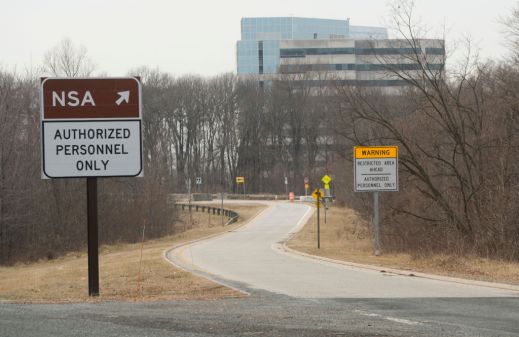Implementing zero trust: a blueprint for cyber resilience in the age of AI

In an era of increasing cyber complexity and persistent threats, federal agencies are reevaluating traditional perimeter-based security models and adopting zero trust as a foundational strategy for resilience.
By integrating identity, telemetry, and real-time visibility across their environments, agencies can establish a more secure posture where no user, device, or system is trusted by default.
Zero trust as a strategic mindset
Zero trust is an adaptive, data-driven approach that assumes no entity should be trusted automatically. It shifts security thinking from prevention to resilience.
Agencies must assume adversaries may already be within their networks and focus on rapid detection and response. This requires embedding visibility across applications, databases, endpoints, and users, and combining telemetry to validate access decisions dynamically.
AI as a force multiplier in cyber defense
Artificial intelligence (AI) has accelerated this evolution. Agencies are beginning to pair zero trust strategies with AI-enabled tools that enhance visibility, scale detection, and support security analysts in real time.
Early AI efforts often centered on pilot projects and machine learning models. More recently, the introduction of large language models has opened the door to faster, more scalable solutions. These tools help analysts uncover adversarial behavior, navigate language barriers in global threat hunting, and identify patterns across vast datasets such as tickets and logs.
The most successful AI implementations serve as force multipliers, and not replacements, for skilled human operators. They assist with risk scoring, prioritize alerts, and reveal slow-moving adversarial behavior that might otherwise remain hidden. Agencies using AI to support existing workflows are finding greater success than those attempting to apply AI as a one-size-fits-all solution.
Managing growing volumes of threat data
As agencies deploy more sensors and gain telemetry across their digital environments, they also face new challenges. The volume of threat data is increasing not because adversaries are more active, but because agencies are getting better at detecting them. AI plays a critical role in making sense of this data, highlighting low-and-slow attack patterns that unfold over months or even years.
Unifying operations for proactive defense
Security operations centers (SOCs) are central to any zero trust strategy. Regardless of which federal model is followed, SOCs provide the real-time analysis and incident response capabilities needed to uncover threats quickly.
They must work in close coordination with network operations centers (NOCs), which provide the infrastructure and isolation capabilities needed to maneuver and contain adversaries. Together, these teams enforce the continuous monitoring and adaptive response that zero trust demands.
Evaluating risk at every access point
A key mindset shift is required. Traditional network defenses were like castle walls with strong perimeters with limited internal defenses. Today’s environments are more like cities, with layered protections at multiple levels.
Each application, room, and interaction requires an independent risk assessment. Agencies must shift to evaluating each access request in real time based on multiple signals: identity, device compliance, location, and sensitivity of the data involved.
Establishing identity as a foundation
Identity plays a foundational role. Agencies must track the identity not just of users, but of devices, applications, and data itself. Real-time access decisions are made by evaluating whether all identities involved meet trust thresholds.
For instance, a compliant user on a secure device at an approved location might be granted access to sensitive data, while another scenario might result in a deny or limited access outcome. All digital elements must be assumed potentially compromised unless proven trustworthy through telemetry.
Building visibility across environments
Before implementing AI-enhanced zero trust, agencies must master the basics. Visibility is key. Agencies need to deploy sensors across their environments –on cloud, on-premises, and hybrid – to understand what exists and how systems are behaving.
This “sensor up” approach enables agencies to spot risks they might otherwise miss. Without this foundation, AI cannot be deployed effectively.
Prioritizing and protecting high-value assets
Once visibility is established, agencies can apply relationship mapping and behavior analysis to identify high-value assets and the systems that support them.
These insights help prioritize protections and reduce attack surfaces. Importantly, agencies must understand that adversaries think in terms of relationships, not network segments. Identifying which identities and systems interact with sensitive data enables better threat modeling and defense planning.
Implementing data-centric policies
Data classification also plays a role. Even within unclassified environments, there are layers of sensitivity. Some data may be publicly accessible, while other data, such as controlled unclassified information (CUI), requires stricter handling. Based on classification and risk, agencies can define access policies that consider device type, location, application, and encryption requirements.
Whether data resides in the cloud, on-premises, or across hybrid environments, agencies must take control of the data itself. This includes encryption and access enforcement, regardless of storage location. Zero trust is about owning data access decisions and applying consistent controls across all environments.
Reinforcing trust with AI-driven risk assessment
Finally, AI supports intelligent threat detection and real-time risk assessment. These models analyze behavioral patterns across millions of microtransactions and signal anomalies. For example, if a user normally accesses a system from one location but suddenly attempts access from an unusual place or time, AI can flag the action for review or block it automatically. This continuous behavioral analysis strengthens detection and response.
By integrating zero trust with AI and strong foundational practices, federal agencies can build a cyber defense strategy that is not only resilient but also adaptive and future-ready. The combination of visibility, identity, policy enforcement, and AI-powered analytics offers a clear path forward for securing critical systems and data in a complex threat environment.
Dan Coleman, General Manager, Federal Civilian at Microsoft, is responsible for the strategic positioning and successful delivery of Cloud and Enterprise Services to Microsoft’s Public Sector customers.






